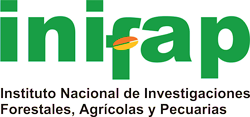Identification and distribution of Meloidogyne spp. in tomato in Sinaloa Mexico
DOI:
https://doi.org/10.29312/remexca.v10i2.392Keywords:
Solanum lycopersicum, horticulture, root-knot nematodeAbstract
Worldwide, the most important phytoparasitic nematode genus is Meloidogyne, since it affects more than 3 000 plant species and its infection is characterized by the formation of galls in the root of the infected plant. In Sinaloa, the current distribution of Meloidogyne is unknown, because the most recent reports are from the year 2000 and 2001, identifying the species M. incognita, M. arenaria, M. hapla and M. javanica, distributed in the state. In the present work of investigation, the objectives were to identify morphologically and molecularly the species of the root-knot nematode (Meloidogyne spp.), as well as, to determine its distribution in the culture of tomato (Solanum lycopersicum L), in Sinaloa, Mexico. Cultivated lots with tomato were sampled in the different horticultural zones of Sinaloa, Mexico, during the agricultural cycles 2013-2014, 2014-2015, 2015-2016 and 2016-2017, in the open field, shade mesh and greenhouses, where samples of soil and roots, to perform morphological and molecular identification. The species identified in the samples collected were M. enterolobii, M. incognita and M. arenaria with 88, 10 and 2% incidence respectively. These results indicate that M. enterolobii, M. incognita and M. arenaria are distributed in the state of Sinaloa in the tomato crop, being M. enterolobii the predominant species.
Downloads
Downloads
Published
How to Cite
Issue
Section
License
The authors who publish in Revista Mexicana de Ciencias Agrícolas accept the following conditions:
In accordance with copyright laws, Revista Mexicana de Ciencias Agrícolas recognizes and respects the authors’ moral right and ownership of property rights which will be transferred to the journal for dissemination in open access. Invariably, all the authors have to sign a letter of transfer of property rights and of originality of the article to Instituto Nacional de Investigaciones Forestales, Agrícolas y Pecuarias (INIFAP) [National Institute of Forestry, Agricultural and Livestock Research]. The author(s) must pay a fee for the reception of articles before proceeding to editorial review.
All the texts published by Revista Mexicana de Ciencias Agrícolas —with no exception— are distributed under a Creative Commons License Attribution-NonCommercial 4.0 International (CC BY-NC 4.0), which allows third parties to use the publication as long as the work’s authorship and its first publication in this journal are mentioned.
The author(s) can enter into independent and additional contractual agreements for the nonexclusive distribution of the version of the article published in Revista Mexicana de Ciencias Agrícolas (for example include it into an institutional repository or publish it in a book) as long as it is clearly and explicitly indicated that the work was published for the first time in Revista Mexicana de Ciencias Agrícolas.
For all the above, the authors shall send the Letter-transfer of Property Rights for the first publication duly filled in and signed by the author(s). This form must be sent as a PDF file to: revista_atm@yahoo.com.mx; cienciasagricola@inifap.gob.mx; remexca2017@gmail.
This work is licensed under a Creative Commons Attribution-Noncommercial 4.0 International license.



